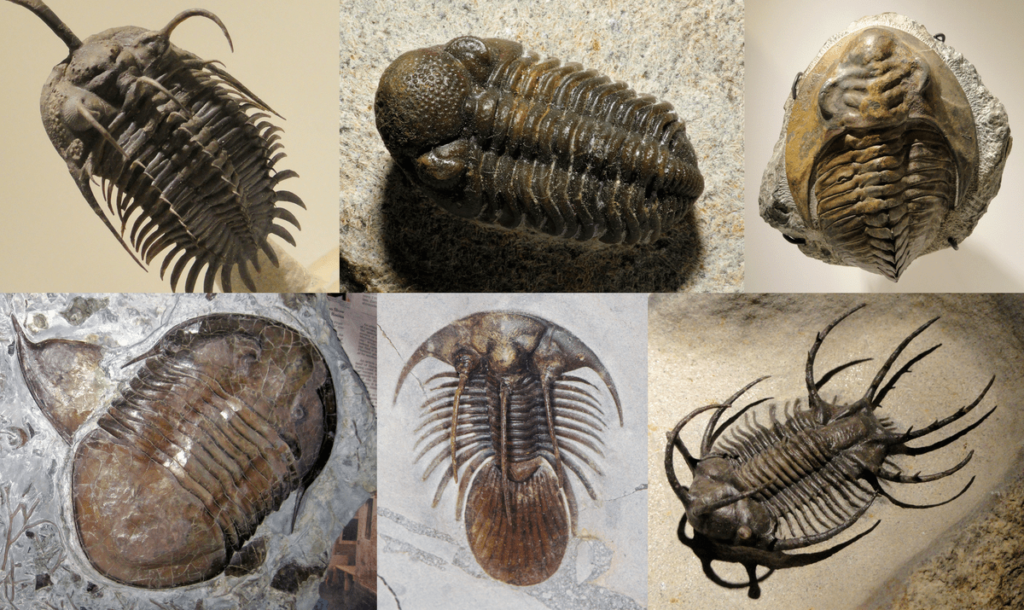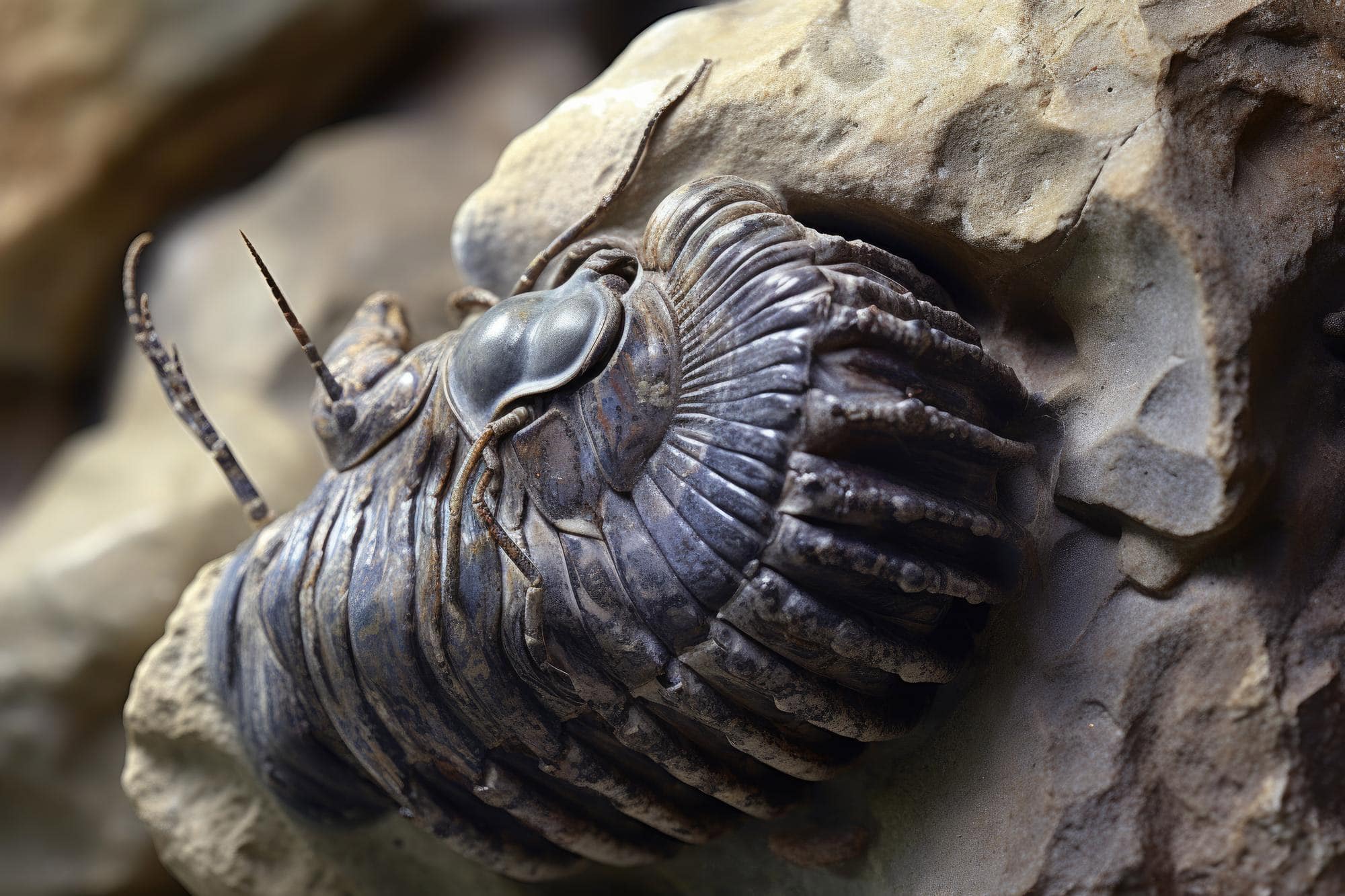Trilobites, with their intriguing name meaning “three lobes,” take us on a captivating journey into the depths of ancient marine life. As extinct marine arthropods, trilobites hold a unique place in the annals of Earth’s history, forming the class Trilobita. Let’s delve into the mysteries of trilobites, uncovering their significance, evolution, and the awe-inspiring journey they undertook through millions of years.
A Glimpse into the Arthropod Ancestry
Trilobites, as one of the earliest known arthropods, offer us a glimpse into the ancestry of these remarkable creatures. The fossil record places their debut at the base of the Atdabanian stage of the Early Cambrian period, a staggering 521 million years ago. Their existence not only defines a pivotal moment in Earth’s history but also marks the beginning of a flourishing era for trilobites.
The Rise and Fall: Trilobite Dominance
Trilobites rose to prominence during the lower Paleozoic era, showcasing their adaptability and resilience. Flourishing for almost 270 million years, these marine marvels were among the most successful early animals. However, their dominance eventually waned, with the Devonian witnessing the decline of all trilobite orders except the Proetida. The mass extinction at the end of the Permian dealt the final blow, marking the disappearance of the last trilobites.
Exploring Trilobite Diversity: Over 22,000 Species
The diversity of trilobites is nothing short of astonishing. With over 22,000 species described, these creatures exhibited a wide array of forms and adaptations. From the intricate patterns on their exoskeletons to variations in size and structure, trilobites showcase the beauty of nature’s experimentation during their extensive existence.
The Paleozoic Time Capsules: Trilobite Fossils
Trilobite fossils serve as invaluable time capsules, preserving the details of their ancient existence. The fossilized remains of these marine arthropods offer paleontologists insights into the Paleozoic era’s environmental conditions, providing a tangible connection to a bygone world that once teemed with trilobite life.
Legacy of Trilobites: Contributions to Paleontology
Beyond their role as fascinating creatures, trilobites have contributed significantly to the field of paleontology. Their well-preserved fossils not only illuminate the evolution of arthropods but also provide essential clues about the Earth’s geological and climatic shifts over millions of years.
Trilobites in Extinction: A Permian Farewell
The decline of trilobites during the Devonian and their eventual extinction at the end of the Permian marked the end of an era. Despite their disappearance from the oceans, the legacy of trilobites endures through their fossils and the wealth of knowledge they offer about the ancient marine ecosystems they once inhabited.

Trilobite Anatomy: Unlocking Exoskeletal Marvels
Delving into the intricacies of trilobite anatomy unveils a world of exoskeletal marvels. Their exoskeletons, often adorned with intricate patterns, served not just as protective armor but also as a canvas reflecting the diversity within the trilobite species. The study of these fascinating exoskeletons provides researchers with clues about the trilobites’ behavior, ecology, and evolutionary adaptations.
Trilobite Locomotion: Navigating Ancient Oceans
Understanding how trilobites moved through the ancient oceans adds another layer to their mystique. From fast-swimming predators to bottom-dwelling scavengers, trilobites showcased a range of locomotion strategies. Their diverse adaptations for navigating the underwater realm contribute to the broader understanding of Paleozoic marine ecosystems.
Predator-Prey Interactions: Trilobites in the Food Chain
Trilobites, as both predators and prey, played integral roles in the Paleozoic food chain. Their interactions with other marine organisms shaped the dynamics of ancient ecosystems. Exploring these predator-prey relationships provides insights into the intricate web of life during the extensive period when trilobites thrived.
Trilobites and Climate Change: A Geological Chronicle
Trilobite fossils offer a unique opportunity to study the impacts of climate change over geological time scales. Changes in trilobite distribution, diversity, and morphology provide valuable data points for understanding how these creatures responded to shifts in Earth’s climate. The trilobite fossil record, therefore, becomes a valuable tool for reconstructing past climates and informing discussions on contemporary environmental challenges.
Paleontological Puzzles: Unraveling Trilobite Taxonomy
Classifying and identifying trilobite species present paleontologists with intricate puzzles. The diversity within the trilobite family demands careful taxonomic scrutiny to unravel their evolutionary relationships and understand the broader patterns of biodiversity during their reign. Each trilobite species, with its unique features, contributes to the ongoing exploration of Earth’s ancient past.
Trilobites in Popular Culture: Fossils That Captivate
Beyond the scientific realm, trilobites have left an imprint on popular culture. Their fossils, with their distinctive appearance, have become iconic symbols of the ancient world. From literature to art, trilobites continue to captivate imaginations, bridging the gap between the scientific and creative realms and ensuring their legacy extends far beyond the confines of the Paleozoic era.
Conclusion:
In conclusion, trilobites stand as testament to the wonders of evolution and the resilience of life on Earth. From their ancient origins in the Cambrian period to their decline and eventual extinction, trilobites left an indelible mark on the planet’s history. As we unearth their stories from the fossil record, trilobites continue to captivate our imaginations, inviting us to explore the depths of our planet’s rich and diverse past.




